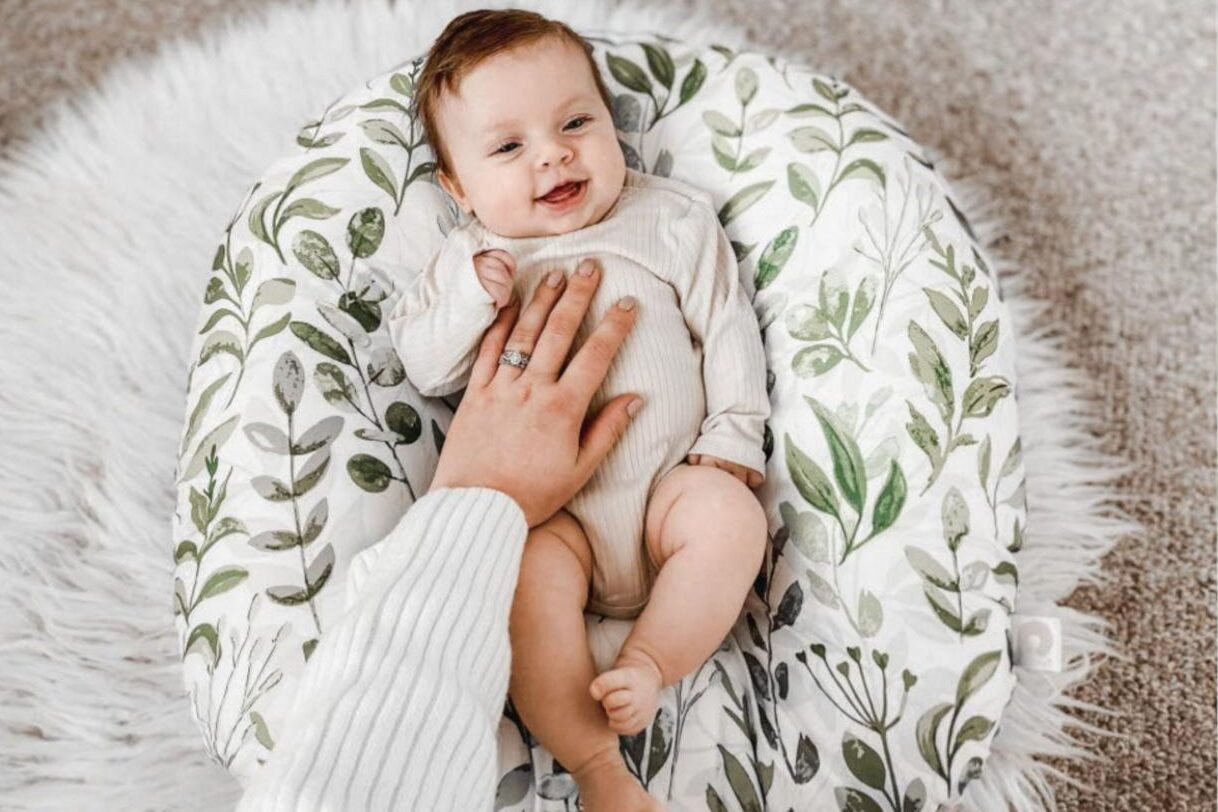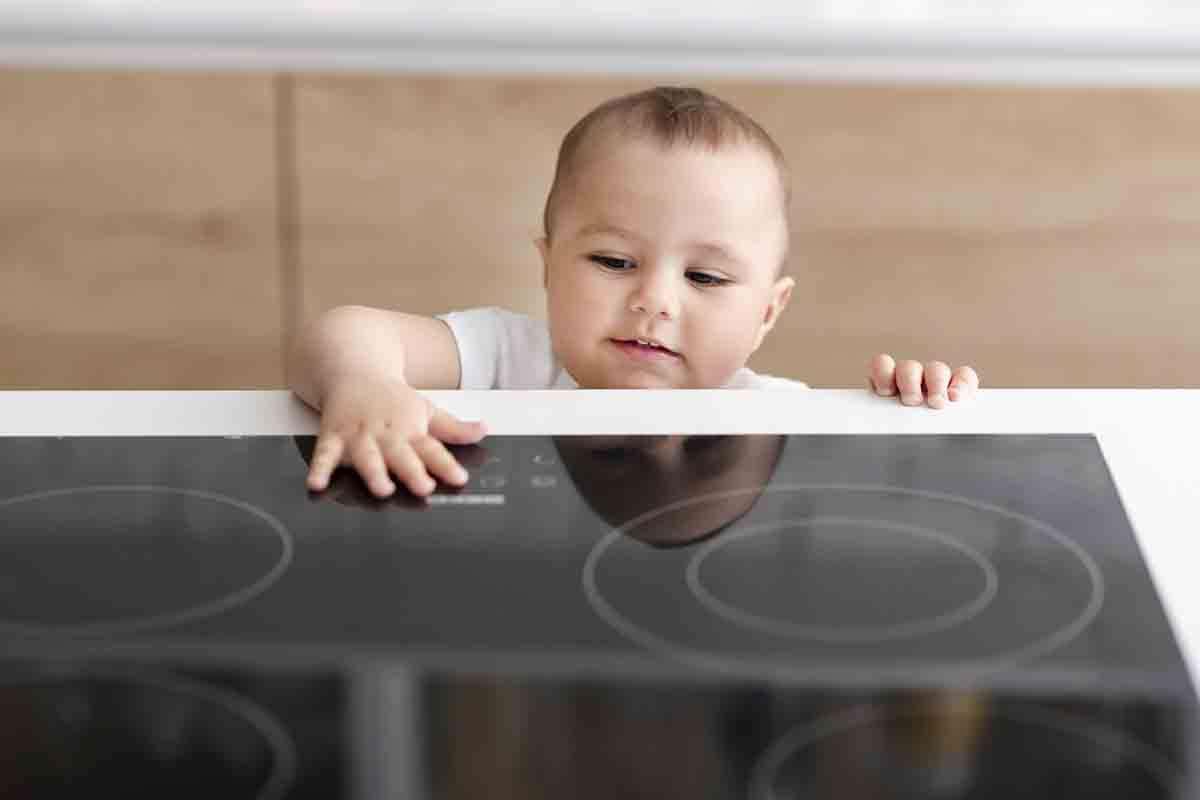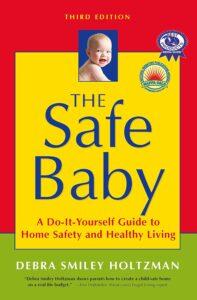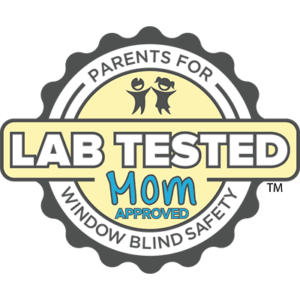Many of these tips are taken from the book
Safe Baby by Debra Smiley Holtzman
Debra Holtzman, J.D., M.A., is a nationally recognized child safety and health expert, specializing in injury prevention, toxic chemicals, food safety, and healthy living.





Get more expert safety tips
The latest edition of Debra Holtzman’s
The Safe Baby is the go-to book for friends and family who are expecting. It includes the most up-to-date guidelines and several safety guides inside.

OTHER HAZARDS
FALLING HAZARDS:
–Large and heavy items such as TVs, microwaves, fish tanks, bookcases, heavy furniture, and appliances. Because of the tipping hazard, secure it to a stud in the wall using brackets, braces, anchors or wall straps. If you have a flat-screen TV, make sure it’s properly mounted or anchored to the wall. Read the manufacturer’s instructions for tips or warnings regarding the placement of your TV or furniture. Shelves, nightstands, and dressers are NOT made to support TVs, especially when the drawers are opened.
–Open windows. A child can fall out of a window that is open more than four inches, and screens offer no protection. Install window safety devices on all windows in your home, especially on the second story and above. Use quick-release mechanisms on any windows that are part our your fire escape plan.
DROWNING HAZARDS:
–An inch of water. A child can drown in just one inch of water (such as in buckets, bathtubs, inflatable pools, diaper pails, toilets, hot tubs, and spas). Small children are top-heavy, and they don’t have the upper body strength to lift themselves out of one of these dangerous situations.
· Never leave a small child unattended in or near water, even for a second.
· Immediately empty water from a tub, sink, inflatable pool, or container after it has been used.
· Install locks on the toilets and store all buckets upside down.
· Install four-sided isolation fencing, at least 5 feet high and equipped with self-closing and self-latching gates around a home pool or spa.
POISONING HAZARDS:
–Button Batteries. When swallowed, these coin-size batteries can get stuck in the esophagus (throat). The saliva triggers an electric current which causes a chemical reaction that can severely burn the esophagus in as little as two hours. Lithium batteries can be found in everything in your home. They are used to power remote controls, key fobs, musical greeting cards, flameless candles, calculators, and other electronics. Tape battery compartments closed and keep these objects out of the reach of small children.
–Single-load Laundry Detergent Packets/Pods. These squishy, brightly colored, small plastic packets can look like candy, juice, or a toy to a young child. And since the detergent is concentrated–it can be especially harmful if ingested. Each year, nearly 12,000 children younger than 5 years old are exposed to the caustic detergent within the pods. It can take just a few seconds for a child children to swallow the toxic chemicals they contain, or get the chemicals in their eyes. Do not let children handle; Keep LOCKED up high, out of a child’s sight and reach. I recommend not using the pods if your home has children less than 6 years of age, or if anyone in your household is cognitively impaired. Use traditional liquid or powder detergents, which are much less concentrated than laundry packets.
–Antifreeze. The main ingredient in many major antifreeze brands is ethylene glycol, which is very toxic. In the past, antifreeze had a sweet taste that enticed children and pets to drink large amounts of it if it was left out in an open container or if it had spilled in the garage or driveway. In December 2012, all U.S. antifreeze manufacturers voluntarily agreed to add a bittering agent to antifreeze. But bittering agents have never been shown to be effective in actual pediatric poisonings, so be careful to protect children and pets from ingesting antifreeze. Use antifreeze formulated with propylene glycol, which is considerably less toxic. For more information visit
–Dieffenbachia and Philodendron. These common houseplants contain oxalates, microscopic crystals that get released into the mouth when the plant is chewed, causing extreme pain and inflammation. Parents should purchase only nontoxic plants when they have children under the age of six and pets.
–Metal Jewelry. Not only do these items pose a choking hazard, but in addition, lead and cadmium has been found in inexpensive children’s jewelry.
–Table salt: A little as half a teaspoon to an infant or a tablespoon to a toddler can cause damage to his central nervous system.
–Baby oil. When you swallow baby oil and other hydrocarbons, they can easily go down the wrong way and get into your lungs. Only a small amount can cause pneumonia within a few hours.
–Alcohol. It can lead to seizures, coma and even death in a young child. (Examples of household products that can contain alcohol: mouthwash, perfumes, colognes, and aftershave, vanilla extract, cough and cold medications and hand sanitizers.)
–E-cigarette devices and liquid nicotine. Poison centers are reporting a recent uptick in calls about exposures to e-cigarette devices and liquid nicotine. Tiny amounts, whether ingested or absorbed through the skin, can cause vomiting and seizures, or even death. Always keep cigarettes and cigars, e-cigarettes and liquid nicotine locked up and out of the reach of children.
–Sugarless products: Pet owners beware! Sugarless chewing gum and products containing xylitol can be poisonous to pets. Other food items that can be toxic to pets include chocolate and caffeine products (coffee, tea), onions, garlic, grapes, raisins, avocado, macadamia nuts, and pork.
–Common household products. Keep all medicines (prescription and over-the-counter), vitamins, dietary supplements, cleaning products, grooming products, and other chemicals locked up, out of reach and sight of children at all times. Never leave potentially poisonous products unattended while in use. It takes only seconds for a poisoning to occur.
Whenever you suspect a poisoning, immediately call the Poison Help Line (available 24 hours a day, 7 days a week), 1-800 222-1222, which automatically connects you to your local poison center. Prominently post this number on your refrigerator and near every phone in the home. Put this number in your cell phone. ALWAYS CALL THE POISON CENTER FIRST, BEFORE TREATING A POISONING.
Unsafe and Recalled Products
Below are resource links for all recalled products.



